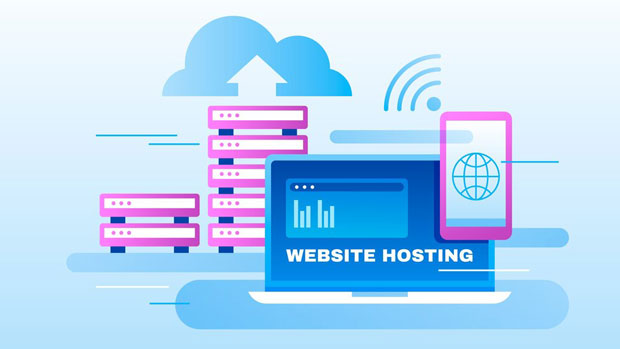In today’s fast-paced digital world, seamless access to online resources across multiple devices and browsers has become a critical aspect for businesses, individuals, and organizations. Proxy services like PYPROXY and IPRoyal offer robust solutions to maintain online privacy and security while providing access to restricted content. However, understanding how well these proxy services perform in multi-device and multi-browser environments is essential for users who need flexible and reliable internet solutions. This article explores the compatibility of PyProxy and IPRoyal proxies in such environments, comparing key features, performance, and practical implications for users. Introduction: Understanding the Need for Multi-Device, Multi-Browser Proxy SolutionsThe need for proxy services has skyrocketed in an age where privacy and security concerns are at the forefront of internet usage. Whether for browsing, streaming, or conducting business transactions, proxies can mask your IP address, protect sensitive data, and grant access to geo-restricted content. In a multi-device and multi-browser environment, users expect proxy services to provide consistent and reliable performance across various platforms.PyProxy and IPRoyal are two widely recognized proxy providers, each offering a set of unique features and compatibility options. The performance and adaptability of these proxies across different devices and browsers significantly influence user satisfaction. In this section, we will examine how PyProxy and IPRoyal proxies fare when used in such environments, highlighting their strengths and limitations.Understanding PyProxy and IPRoyal Proxies: Key FeaturesPyProxy FeaturesPyProxy is known for offering an extensive range of proxy types, including residential, data center, and mobile proxies. Its strong point lies in its ability to rotate IP addresses frequently, which ensures anonymity and security for users. PyProxy also supports integration with popular tools and browsers, which makes it suitable for a wide variety of use cases, including web scraping, automated tasks, and secure browsing.One of the standout features of PyProxy is its ease of use across different devices. The service is compatible with both desktop and mobile platforms, providing flexibility to users. Additionally, PyProxy ensures high reliability when accessed through multiple browsers, such as Chrome, Firefox, and Edge, giving users confidence in its performance across different environments.IPRoyal FeaturesIPRoyal is another prominent name in the proxy service industry, offering a wide range of proxies including residential, private, and public options. IPRoyal’s main strength lies in its ability to provide high-speed connections and an extensive pool of IPs from different geographical locations, making it ideal for users who need to access geo-blocked content. While IPRoyal is equally capable of providing services for multiple devices and browsers, it tends to offer more customizable options for users looking to scale their proxy needs. IPRoyal supports integration with various third-party applications, making it a flexible solution for professional use cases like market research, data collection, and content localization.Compatibility in Multi-Device EnvironmentsPyProxy’s Compatibility with Multi-Device UsagePyProxy has shown exceptional compatibility when used across various devices, including smartphones, tablets, and desktop computers. The service provides browser extensions and direct proxy settings that can be easily configured on both mobile and desktop browsers. This feature makes it ideal for users who require proxy services on the go, without the need for complex setup procedures.Moreover, PyProxy’s use of mobile proxies allows for smooth functionality on smartphones, ensuring that users who rely on mobile networks do not experience slowdowns or connection issues. This makes it particularly useful for businesses that need to manage marketing campaigns or social media operations on mobile devices.IPRoyal’s Compatibility with Multi-Device UsageIPRoyal also excels in multi-device compatibility. Its service integrates seamlessly with various platforms, from desktops to mobile devices. IPRoyal’s flexibility is evident in the ability to work with all popular operating systems, including Windows, macOS, and Android. The proxy configurations are designed to be intuitive, allowing users to easily configure proxies on different devices, enhancing their user experience.IPRoyal also offers mobile proxies that are optimized for smooth and uninterrupted performance. For users who require a high volume of requests, such as for web scraping or data gathering, IPRoyal offers robust API support, ensuring smooth operation across various devices.Compatibility in Multi-Browser EnvironmentsPyProxy’s Performance on Different BrowsersWhen it comes to multi-browser compatibility, PyProxy delivers strong performance across several popular browsers, including Google Chrome, Mozilla Firefox, and Microsoft Edge. The proxy service is supported by browser extensions, which make it easier for users to set up and manage proxies directly from their browsers.PyProxy’s automatic IP rotation feature ensures that users experience minimal disruptions when browsing through different websites or switching between tabs. This is particularly important for web scraping tasks or when users are performing activities that require frequent IP changes. However, while PyProxy is compatible with most browsers, some users may experience occasional connection issues with more niche or outdated browser versions.IPRoyal’s Performance on Different BrowsersIPRoyal also offers excellent compatibility with a wide range of browsers, including Google Chrome, Firefox, Opera, and Safari. Users can easily set up proxies via manual configurations or browser extensions, and the service ensures consistent, high-speed performance, even with complex tasks like streaming or online gaming.One notable feature of IPRoyal is its ability to work effectively with privacy-focused browsers like Tor. This makes IPRoyal an attractive choice for users who prioritize anonymity and security in their online activities. Additionally, IPRoyal supports integration with various third-party tools, which is beneficial for advanced users who need more customization options.Speed and Reliability Across Devices and BrowsersPyProxy’s Speed and ReliabilityIn terms of speed, PyProxy provides reliable and fast connections, particularly for residential and mobile proxies. The speed is consistent across different devices and browsers, with minimal latency or packet loss during use. However, users may notice some performance variations based on the geographical location of the IP addresses being used, as well as the type of proxy chosen.PyProxy’s rotating IP addresses ensure that users can access the internet without the risk of being blocked or detected. This is particularly useful for tasks like web scraping, where users need to maintain anonymity and avoid detection by websites.IPRoyal’s Speed and ReliabilityIPRoyal’s proxies are known for their high-speed connections, making them ideal for use cases requiring large data volumes or fast streaming. With an extensive pool of IP addresses, IPRoyal ensures that users experience minimal downtime, regardless of the device or browser being used.While IPRoyal’s speed is generally top-notch, users may occasionally face slower speeds depending on the proxy type and server location. However, the flexibility of IPRoyal’s service, combined with its customizable settings, allows users to optimize their proxies for the best possible performance.Conclusion: Which Proxy Service is Best for Multi-Device, Multi-Browser Environments?Both PyProxy and IPRoyal offer excellent compatibility in multi-device and multi-browser environments. PyProxy stands out with its ease of use, mobile proxy capabilities, and automatic IP rotation, making it a great choice for users who require seamless browsing across various devices and browsers. On the other hand, IPRoyal offers high-speed connections, robust customization options, and support for advanced tasks, making it ideal for users who need more flexibility and performance in their proxy services.Ultimately, the choice between PyProxy and IPRoyal will depend on the specific needs of the user. For those who require simplicity and mobile compatibility, PyProxy is a strong option. However, for users who need high-speed performance and greater customization, IPRoyal provides a more versatile and scalable solution.
Sep 16, 2025



































































